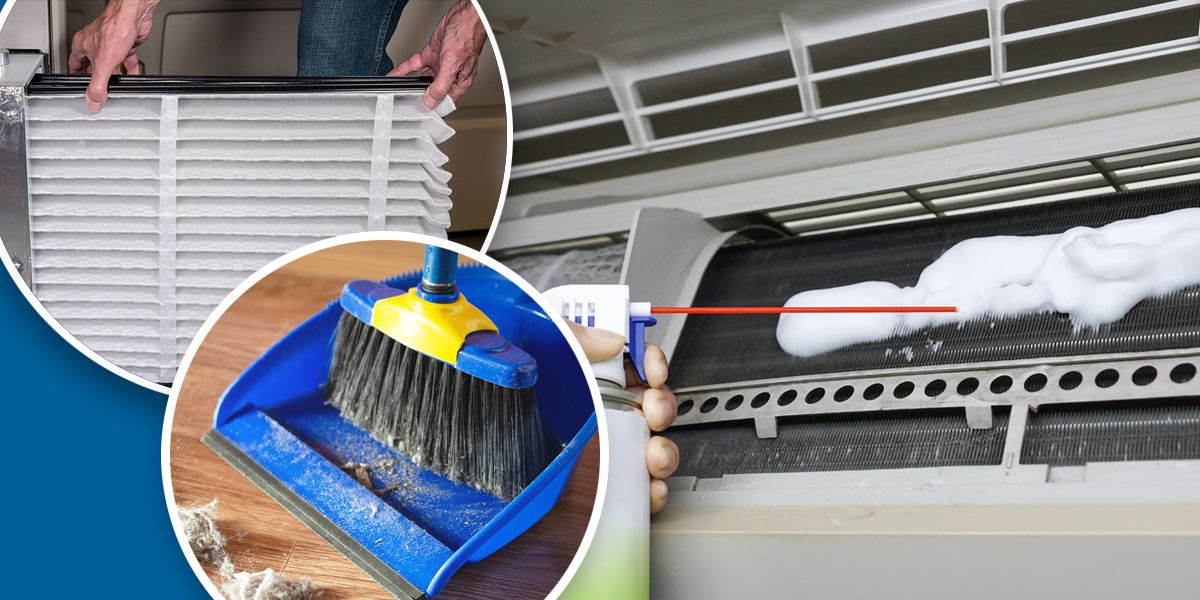Your HVAC system works hard behind the scenes to keep your home comfortable year-round. One of its most essential components is the evaporator coil. Without it, your air conditioner or heat pump couldn't cool your home correctly.
At MRCOOL®, we understand that knowing how your system works can help you spot issues early, improve efficiency, and extend the life of your investment. That’s why we’ve created this guide: to explain exactly what an evaporator coil is, how it works, how to recognize signs of trouble, and how to keep it operating at peak performance.
Whether you're a DIY enthusiast, a tech-savvy homeowner, or someone who wants to understand your heating and cooling system better, you'll find practical insights here, backed by the innovation and reliability you expect from MRCOOL®.
What Is an Evaporator Coil?
The evaporator coil is critical to your air conditioning or heat pump system. Simply put, it's the component responsible for pulling heat out of the air inside your home. As warm air from your living space passes over the coil, the refrigerant inside absorbs the heat, helping to cool the air before it's circulated back throughout your home.
You can think of the evaporator coil as the "cooling core" of your HVAC system. It's typically made of highly conductive metals like copper, aluminum, or steel, which allow heat to transfer efficiently. The coil is usually shaped like a tightly wound "A," but depending on your system, it may also be configured as a flat panel or another compact design.
Most modern systems are built with corrosion-resistant materials to ensure the coil can withstand years of operation without breaking down from moisture exposure or airborne contaminants. Despite its sturdy construction, regular maintenance is still essential to prevent buildup that can interfere with heat absorption.
Without a properly functioning evaporator coil, your air conditioner or heat pump would struggle to keep your home comfortable, leading to poor cooling performance, inconsistent indoor temperatures, and higher energy bills. That's why it's essential to understand how this component works and recognize when something might be wrong.
Understanding the role of the evaporator coil also sets the stage for knowing how the entire heating and cooling cycle operates, which we'll explore next.
Evaporator Coil vs. Condenser Coil
While the evaporator and condenser coils work closely in your HVAC system, they perform very different jobs. Understanding the difference can help you better understand how your air conditioner or heat pump cools your home, and why both coils are essential for effective system operation.
Here’s a quick comparison:
- Evaporator Coil:
- Located inside the home, typically within the air handler or furnace
- Absorbs heat from indoor air
- Works with refrigerant to cool the air that circulates through your home
- Condenser Coil:
- Located outside the home, in the outdoor unit
- Releases heat gathered from inside the home into the outdoor air
- Supports the refrigerant cycle by expelling absorbed heat
In short, the evaporator coil pulls heat out of your home, while the condenser coil pushes that heat outside. Together, they keep your indoor spaces cool, dry, and comfortable. If either coil becomes damaged or dirty, your system's performance can decline quickly, making regular inspection of both components a critical part of system care.
How Does an AC Evaporator Coil Work?
The process behind how an evaporator coil works might seem complex initially, but it’s easy to understand when you break it down step by step.
- The refrigerant enters the evaporator coil as a cold, low-pressure liquid.
This refrigerant is formulated to quickly absorb heat, even at low temperatures. - The HVAC system's blower fan draws in warm indoor air.
The air passes over the evaporator coil, and the refrigerant absorbs the heat from the surrounding air. - As the refrigerant absorbs heat, it evaporates into a gas.
This phase change from liquid to gas efficiently pulls heat out of the air. - The blower fan circulates the now-cooled air back through your home.
Cool, dehumidified air fills your living spaces, helping to maintain a comfortable indoor environment. - The warmed refrigerant moves to the condenser coil.
At the outdoor unit, the refrigerant releases the absorbed heat and returns to its liquid state to start the cycle again.
This entire cycle happens quickly and continuously whenever your HVAC system is operating. Thanks to the efficient design of modern MRCOOL® systems, heat transfer is optimized and energy use is minimized, helping you stay cool without excessive utility costs.
Where Is the Evaporator Coil Located?
The evaporator coil is located inside your home or near the air handler. Depending on your HVAC system design, it might be:
- Positioned above or below your furnace (in split systems)
- Contained inside a dedicated air handler cabinet
- Built into the ductwork itself in some packaged systems
In many residential setups, the evaporator coil is hidden behind a service panel for protection. If you remove the panel, you'll often see the coil’s distinctive A-shape or panel design and other internal components like the blower motor.
Knowing where the evaporator coil is located can help you recognize maintenance needs sooner and ensure easy access for professional service when necessary. It also allows homeowners who enjoy DIY projects to stay proactive about system health by checking for visible frost or dust buildup during routine home inspections.
Signs of Problems With an Evaporator Coil

Your evaporator coil plays a significant role in keeping your home cool, but like any part of your HVAC system, it can develop problems over time. Recognizing the early warning signs can help you avoid more serious (and expensive) repairs later.
Watch for these signs:
- Ice or frost on the coil:
If you notice ice buildup, it could mean a refrigerant leak or airflow blockage. If not addressed, both can reduce efficiency and damage the system. - Weak airflow or warm air blowing:
When the coil isn't functioning correctly, you may feel reduced airflow or warm air instead of cool air, even when the system is running. - Unusual noises:
Strange sounds, such as bubbling, hissing, or whistling, can indicate refrigerant leaks or blockages within the coil, which should be professionally repaired. - Increased energy bills:
A struggling coil can force your system to work harder and longer to achieve the same level of cooling, driving up your energy costs over time. - Frequent system cycling:
If your HVAC system turns on and off more frequently than usual, the coil may not absorb enough heat to maintain consistent indoor temperatures.
If you spot any of these issues, scheduling a professional inspection immediately is a good idea. Quick action can prevent more expensive repairs later and help ensure your home remains comfortable during the hottest parts of the year.
Tips To Maintain an Evaporator Coil

Regular maintenance is key to ensuring your evaporator coil works at its best. A few simple habits can keep your system efficient, reliable, and long-lasting.
Here’s what we recommend:
- Change filters regularly.
Dirty air filters restrict airflow, making the evaporator coil work harder and increasing the risk of freezing. It's a smart habit to check filters monthly and change them at least every 30–90 days. - Keep the surrounding area clean.
Dust, pet hair, and debris around your air handler can get pulled into the system and settle on the coil. Keeping the area clean helps prevent buildup that could reduce system efficiency. - Use coil cleaner sprays.
Specialized coil cleaners are available that can help remove dust and grime without damaging delicate coil fins. Always follow manufacturer guidelines when using these products. - Schedule seasonal tune-ups.
During a complete system checkup, professional technicians can inspect, clean, and maintain your evaporator coil, especially before heavy-use seasons like summer or winter.
Taking care of your evaporator coil improves comfort and extends the lifespan of your entire HVAC system, saving you time, money, and unnecessary stress in the long run.
Contact the Experts at MRCOOL® With Your Evaporator Coil Questions
Understanding your HVAC system — and its key components like the evaporator coil — can significantly affect how well your home stays cool, comfortable, and energy-efficient.
If you have any questions about your evaporator coil, need help diagnosing a problem, or are considering upgrading your system, the experts at MRCOOL® are here to help. We’re proud to offer innovative, durable, and DIY-friendly HVAC solutions that make home comfort easier than ever.
Ready to get started? Contact our support team or find a MRCOOL® dealer near you today at https://mrcool.com/locations/.
